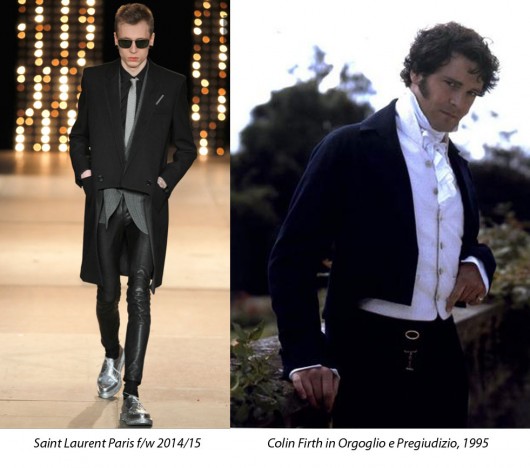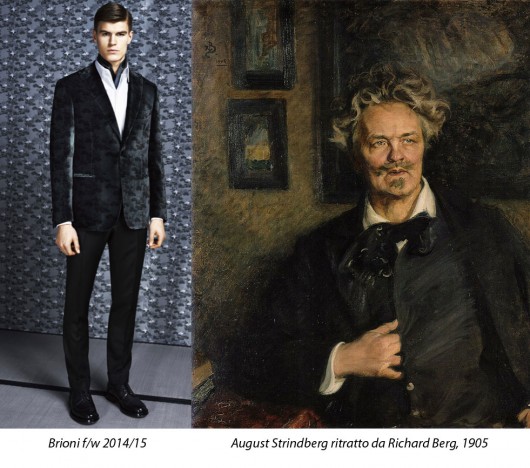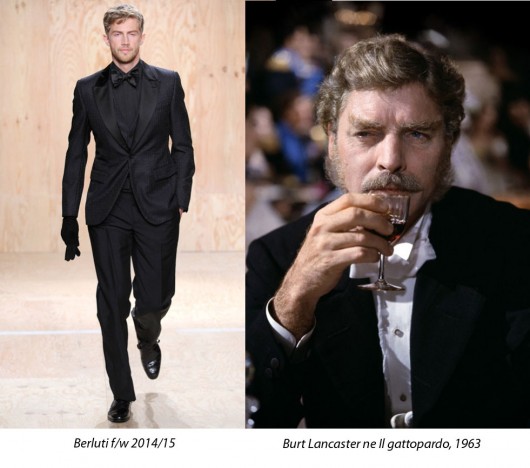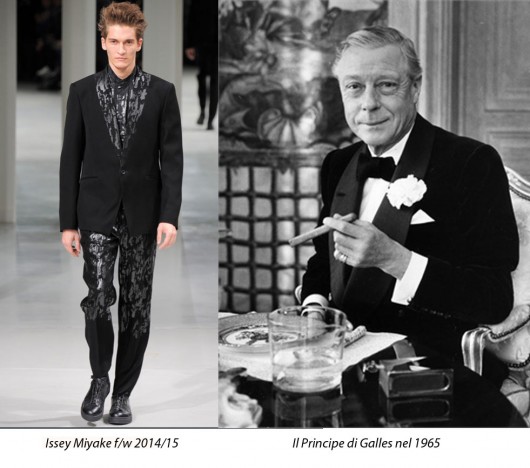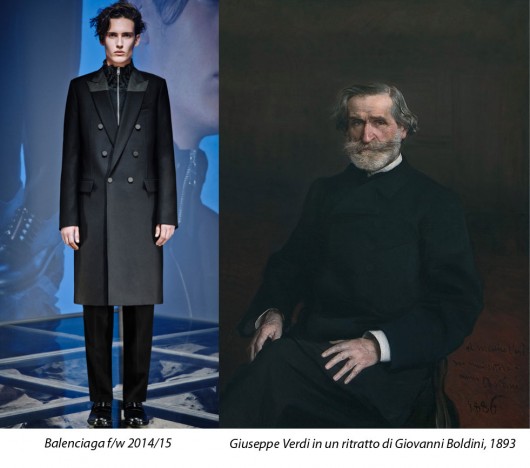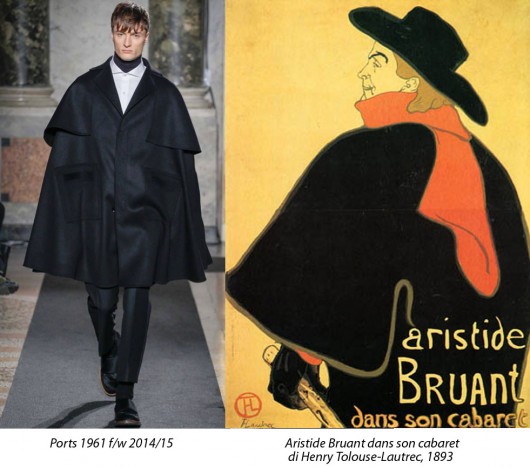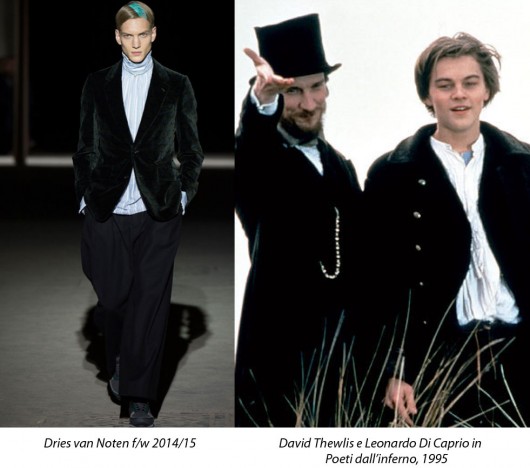BLACK MIDNIGHT
Non è mai stato oggetto di discussione, semmai di variazioni sul tema: anche al maschile il nero è IL colore della sera. Allo stesso modo, nelle varie tipologie in cui si sono articolati nel tempo i codici dell’evening style si è sempre concretizzato non solo il massimo dell’eleganza, ma soprattutto il nonplusultra di un aplomb dovuto a forme e costruzioni dei capi, ma anche alla valenza di severità del non-colore per eccellenza.
Il nero è capace di esprimersi con grande versatilità, come dimostrano le interpretazioni che si vedono nelle collezioni di oggi, in cui certi pezzi travalicano non di rado occasioni e funzioni d’uso, emancipati ormai dal vincolo dell’utilizzo serale, un po’ troppo vincolante. E’ scontato affermare che il perno dell’evening dress sia e continui ad essere lo smoking, alias tuxedo, o dinner jacket, come lo si voglia chiamare a seconda di latitudini, longitudini…
Allo smoking ed alle sue interpretazioni è già stato dedicato un capitolo intero di Fashion Fil Rouge. Senza nulla togliere a Sua Maestà lo smoking, è il caso di focalizzare l’attenzione sulle altre, non poche componenti dell’abbigliamento da sera. Se lo smoking è il re, il frac è l’imperatore. Nasce in concomitanza con il passaggio dall’Ancien Régime all’età contemporanea. In concreto altro non è che l’evoluzione della marsina dei secoli XVII-XVIII: si accorciano a spencer le falde anteriori, quelle posteriori si allungano e si stondano, il nero tende a sostituire i colori pastellati che fanno troppo vecchia aristocrazia.
Una sorta di paleo-frac, ancora sovraccarico di decorazioni, è a tutti gli effetti la tenuta di corte dell’era napoleonica. Quasi in contemporanea, l’eccezionale buon gusto, ma anche la lungimiranza di Lord Brummel, che de facto riscrive le regole dell’eleganza, sdoganano definitivamente l’indumento, in tutto l’Occidente e trasversalmente rispetto alle classi sociali, dalla nobiltà alla nuova borghesia. Non muta il fatto che il frac sia un capo da cerimonia. Indossato da sovrani, capi di stato, diplomatici, direttori d’orchestra, è e resta un capo che evoca comunque solennità e rigore, oggi pur stemperati in variazioni più disinvolte.
Di poco più giovane è l’evening coat asciutto, lungo al ginocchio, se non nero comunque di colori profondi, opposto per foggia al paletot ampio più da giorno, di anima britannica. Si indossa sopra l’abito, ma in realtà ha origine da un tipo particolare di giacca, lo stiffelius, già piuttosto lunga, chiamata in italiano finanziera perché indossata dai notabili. E quando lo stiffelius aggiunge all’orlo un po’ di centimetri, finisce per piacere a tutti, anche agli intellettuali, dai romantici inglesi ai poètes maudits che per sfidare il perbenismo lo portano anche sgualcito, aperto sul panciotto o persino sulla camicia bianca oversize.
La stessa poliedricità riguarda il mantello a ruota, quasi sempre di panno, e preferibilmente nero. Nell’Ottocento si chiama tabarro. Lo indossano gli umili, perché riscalda ancor più del cappotto che certo non si possono permettere.. Lo portano i briganti del Mezzogiorno, gli anarchici romagnoli, i protagonisti del demi-monde parigino ritratti da Tolouse-Lautrec, i dandy, ma anche figure che appartengono all’establishment, Giuseppe Verdi in primis.
Vale la pena di spendere un’ultima parola per un’altra, a parere di chi scrive straordinaria, protagonista del vestire da sera: la giacca in velluto liscio. Tagliata come quella dello smoking, ne costituisce una formidabile alternativa, meno impegnativa e un poco più eccentrica. Conosce un boom prorompente negli anni della moda beat. Diventa un must have grazie a Mick Jagger o Malcolm McDowell. E permette lo sconfinamento cromatico: dal nero tout court, al blu notte o al burgundy. Giorgio Re
It have never been a matter of debate, but of variations on the theme: also in menswear black is THE colour of evening. In the same way, through the several codes of evening style that followed one another during the years, the result has always been the top of elegance, but above all the top of an aplomb due to garments’ shapes and cuts, but also to the rigour of the non-colour par excellence. Black is able to express itself with great versatility, as proved by the interpretations seen in today’s collections, that often go beyond situations and functions, free by now from the restriction of evening use, too much binding. It’s obvious stating that the fulcrum of evening dress is the tuxedo. Fashion Fil Rouge has already dedicated a whole chapter to the tuxedo and its interpretations. If the tuxedo is the King, the tailcoat is the Emperor. It was born during the passage from the Ancien Règime to Contemporary Era. It’s the evolution of the tails worn in XVII-XVIII centuries: the front part became shorter, while the back folds became longer and rounder, black replaces those pastel colours used by the old aristocracy. A kind of paleo-tailcoat, still overloaded with embellishments, was the court outfit during the Napoleonic era. Simultaneously, the exceptional good taste and foresight of Lord Brummel, who rewrote the rules of elegance, sanctioned definitely the garment, in all the West and across the social classes, from the aristocracy to the new bourgeoisie. But the frac is a formal dress. It has been worn by sovereigns, heads of state, diplomats, orchestra leaders, it evokes solemnity and rigour, even if today tempered in more relaxed variations. A bit younger is the fitted, knee-long evening coat, not necessarily black but always dark, with a shape completely different than the wider day coat. It must be worn over the suit, but it has its origins in a specific kind of long jacket, the stiffelius. And when the stiffelius became longer it pleased everyone, even the intellectuals, from the Romantics to the poètes maudits that, to defy the righteousness, wore it creased, open over the waistcoat or even over an oversized white shirt. The same versatility is typical of the cape, often made of felt, preferably black. It was worn by humble people, because it was warmer than the coat, that they sure could’t afford. It was worn by the Southern bandits, the anarchists, the demi-monde people portrayed by Tolouse-Lautrec, the dandies, but even people belonging to the establishment, for example Giuseppe Verdi. It is worth mentioning another extraordinary protagonist of evening clothing: the velvet jacket. With the same cut of the tuxedo jacket, it represents an amazing alternative, less demanding and a little more eccentric. It had a great boom in the years of beat fashion and became a must-have thanks to Mick Jagger or Malcolm McDowell. And it allows the colour trespassing: from total black, to midnight blue or burgundy. Giorgio Re





